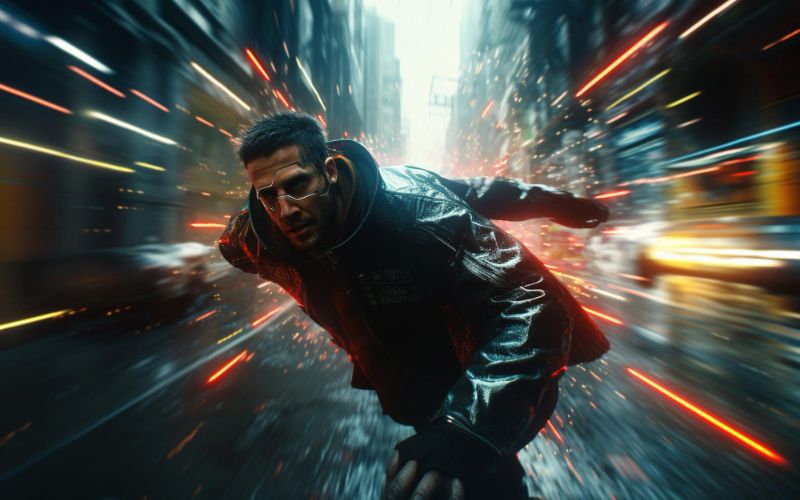In today’s world, where digital media is omnipresent, visual effects or VFX has revolutionised the entertainment industry by adding a whole new dimension to video projects. VFX, short for Visual Effects, involves the blending of computer-generated (CG) effects with live-action footage to create visually captivating and highly engaging content.
Through VFX, it is possible to transform ordinary video footage into a completely new and immersive experience. Be it a movie, a TV show, or a commercial, VFX has become an essential part of the production process for many professionals in the industry.
In this blog, we will cover a guide to clear your doubts regarding VFX course.
Topics We Are Going To Cover
# What Do You Study for VFX?
# How Is Hands-on Practice Beneficial When It Comes To VFX Training?
# How to Choose the Right VFX Course After 12th According to Your Needs?
What Do You Study for VFX?
If you’re interested in pursuing a career in Visual Effects (VFX), you may be wondering what you need to study to excel in this field. While formal education is not always a requirement in the VFX industry, having a solid foundation of knowledge and skills is crucial. Here are some key areas that you should focus on when studying for VFX.
1. Computer Graphics
Understanding the principles of computer graphics is essential for any VFX artist. This involves learning about rendering techniques, lighting, texturing, shading, and modeling. By studying these concepts, you’ll be able to create realistic and visually appealing effects that seamlessly blend with live-action footage.
2. Animation
Animation is a fundamental part of VFX, and studying it will greatly benefit your work. Mastering the principles of motion, timing, and weight will allow you to create believable and seamless effects. Concepts such as keyframe animation, character animation, and techniques like squash and stretch, anticipation, and follow-through should be studied to enhance your animation skills.
3. Compositing
Compositing is the process of combining multiple visual elements into a unified and seamless final image. Understanding the fundamentals of compositing is crucial for achieving professional-quality results. Learn about color grading, masking, layering, and blending modes. Familiarize yourself with industry-standard compositing software such as Nuke or After Effects to develop your skills in this area.
4. Visual Effects Software
To work effectively in the VFX industry, it is important to be proficient in industry-standard software. Programs like Autodesk Maya, Cinema 4D, Houdini, or 3ds Max are commonly used for 3D modeling, animation, and simulation. Investing time in mastering these tools will give you a competitive edge and open up more opportunities in the field.
5. Special Effects
While VFX and special effects are often used interchangeably, there are distinct differences between the two. Studying special effects will give you a deeper understanding of practical effects and help you create realistic VFX elements. Concepts such as pyrotechnics, explosions, weather effects, particle systems, and fluid dynamics should be explored to enhance your abilities in this area.
6. Photography and Cinematography
Having a solid understanding of photography and cinematography is crucial for integrating your VFX work with live-action footage. Study composition, lighting techniques, camera angles, and lenses to ensure that your VFX elements match the lighting and perspective of the original footage. This knowledge will result in more convincing and seamless visual effects.
7. Programming and Scripting
While not mandatory, having some programming and scripting knowledge can greatly benefit your VFX career. Languages like Python or C++ can be used to automate repetitive tasks, create custom tools, and improve workflow efficiency. Learning scripting will also enable you to work more effectively with VFX pipelines and production workflows.
8. Art and Design
Developing your artistic skills is vital for creating visually appealing VFX. Study art and design principles, including composition, color theory, and visual storytelling. By applying these principles, you’ll be able to create captivating effects that enhance the overall aesthetic of a project.
If you want to learn more about it then look for a VFX course. There are many top VFX institutes that offer you different types of VFX courses.
How Is Hands-on Practice Beneficial When It Comes To VFX Training?

VFX training involves learning various techniques, software, and tools. While understanding the theory behind these concepts is essential, hands-on practice provides the opportunity to apply that knowledge in a real-world scenario. By working on practical exercises and projects, students can see how the theory translates into practical applications. This helps solidify their understanding and improves their ability to implement what they have learned effectively.
| Developing Technical Skills: | Visual effects require proficiency in using specialized software and tools such as Autodesk Maya, Adobe After Effects, Nuke, or Houdini. Therefore, hands-on practice allows students to become familiar with these tools and develop the technical skills needed to execute complex VFX tasks. |
| Hands-on practice in VFX training presents students with real-world challenges that require problem-solving skills and creative thinking. Through practical exercises, students encounter various obstacles that they must overcome to achieve their desired visual effects. | Problem-Solving and Creative Thinking: |
| Understanding the Workflow: | VFX production involves intricate workflows and collaboration between different departments. Applying theoretical knowledge allows students to experience the entire VFX pipeline firsthand, from pre-production to post-production. |
| VFX practical knowledge provides an opportunity for students to build their portfolio. As they work on practical projects, they create a collection of their work that showcases their skills and creativity. A strong portfolio is essential for gaining employment in the competitive VFX industry. | Building a Portfolio: |
How to Choose the Right VFX Course After 12th According to Your Needs?
Choosing the right VFX course after completing your 12th grade can be a daunting task. With numerous options available in the market, it’s important to consider specific factors that will help you narrow down your choices and find a course that best suits your needs. Here are some essential factors to consider when choosing VFX courses after 12th:
1. Identify Your Career Goals
Before diving into the world of VFX, it’s crucial to identify your career goals. Consider what aspect of visual effects you are most interested in. Are you fascinated by animation, compositing, or VFX supervision? Identifying your goals will help you choose a course that provides the necessary skills and knowledge for your chosen career path.
2. Research the Course Content
Take the time to research the course content in detail. Look for courses that cover the specific skills, software, and techniques relevant to your career goals. Make sure the course descriptions and syllabi align with your expectations, and delve into the learning objectives, assignments, and projects.
3. Instructor and Faculty
The expertise and guidance of the instructors and faculty members play a pivotal role in shaping your learning experience. Research their backgrounds and credentials, and find out if they have real-world industry experience. A strong faculty can provide valuable insights and mentorship, so look for instructors who are not only knowledgeable but also engaged and supportive.
4. Course Duration
Consider your time commitments, budget, and career goals when selecting a course duration. Some VFX courses can be as short as a few months, while others may last several years. Shorter courses are ideal for quick skill development, while longer programs offer a more comprehensive education and project-based learning opportunities.
5. Institute and Course Accreditation
The reputation of the institute and accreditation of the course are crucial elements to consider. Research the institute’s history, alumni success stories, and industry partnerships. Look for institutes that provide job placement support and internships. Opt for accredited courses to ensure that the learning outcomes meet industry standards and requirements.
6. Course Fees
VFX courses can vary significantly in terms of fees. Consider your budget and check if the course offers any financial aid options. Keep in mind that investing in a reputable course with quality instruction can be a worthwhile long-term investment in your career.
VFX courses can vary significantly in terms of fees. Consider your budget and check if the course offers any financial aid options. Keep in mind that investing in a reputable course with quality instruction can be a worthwhile long-term investment in your career.
Are You Looking For A Top VFX Institute Near You?
If you are searching for a “top VFX institute near me” then George Animatrix is the right place for you. We are going to lay the groundwork and provide you with the necessary tools to be a successful visual effects artist. We’ll be there to help you as you pursue your professional aspirations in the visual effects industry.
Recommended Post: A Complete Guide About VFX Professional Course
Conclusion
In conclusion, pursuing a career in VFX requires a strong foundation of knowledge and skills in computer graphics, animation, compositing, special effects, photography, and programming. Hands-on practice is also crucial in developing technical skills, problem-solving abilities, and creative thinking. When choosing a VFX course after 12th, it’s important to identify your career goals, research the course content, consider the instructors and faculty, course duration, institute and course accreditation, as well as course fees.



